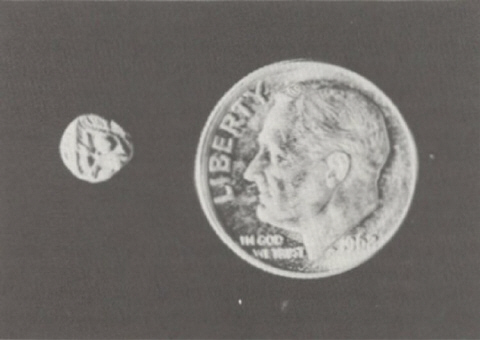Coins Of The Bible -- By: Stan Hudson
Journal: Bible and Spade (First Run)
Volume: BSP 09:4 (Autumn 1980)
Article: Coins Of The Bible
Author: Stan Hudson
BSP 9:3-4 (Summer-Autumn 1980) p. 85
Coins Of The Bible
Few tangible reminders of everyday life have seen as little change over the centuries as have coins. Except for production techniques, coins have received little improvement in concept from Bible times.
The value of gold and silver as a medium of exchange was widely known, of course, even before the invention of coins. In the Old Testament we find references to such usage. Abraham’s wealth was measured in gold, silver, and cattle (Genesis 13:2). When precious metals were meant to be used as money they were formed into ingots or wedges (such as Achan’s wedge of Joshua 7:21) and large rings, easy to transport (the bundles of money of Genesis 42:35). This latter usage is preserved in the word kirkar, or talent, meaning “circular” or “ringlike.”
Before coins in standard shapes and sizes were invented, payment was determined by weight. In fact, the terms “to pay” and “to weigh” were expressed by the one word shaqal. From this verb we get the word shekel (or more accurately, sheqel), which came to denote a somewhat fixed weight of approximately 12 to 14 grams.
BSP 9:3-4 (Summer-Autumn 1980) p. 86
By the time of Solomon standardized stone weights, some with inscriptions of values, were used to determine the value of precious metals in barter transactions. Solomon warned against the practice of cheating by using more than one set of weights (Proverbs 20:23).
The First Coins
Herodotus accurately assigned the invention of coinage to the Lydians, a small but wealthy merchant nation in western Asia Minor. The first coins, minted about 640 B.C., were struck in electrum, a naturally occurring alloy of gold and silver, originally thought to be an element in its own right. Soon gold alone was being used; silver followed in the time of Croesus (mid-sixth century B.C.). These tiny coins were of similar styles, having either a crude animal (often a lion) or geometric designs on one side, and deep incuse, or sunken, impressions on the other.
Persian and Greek Coins
When, in 547 B.C., Cyrus took Sardis, and all Asia Minor became a Persian possession, the Persians quickly saw the advantages of the coin. Darius I (Hystaspis) (521-486 B.C.)

Lydia, seventh century B.C., 1/48 stater (size: 5 mm; note its size as compared with a U.S. dime).
BSP 9:3-4 (Summer-Autumn 1980) p. ...
Click here to subscribe
